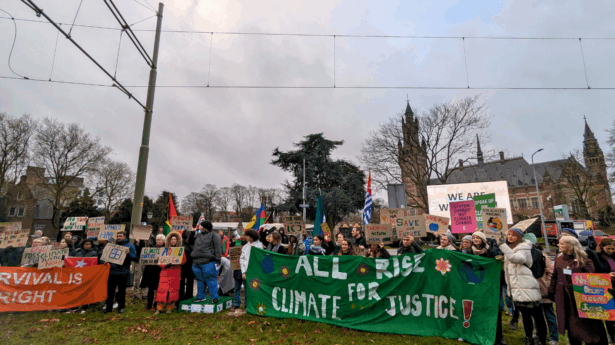The Unitarian Universalist Service Committee advances human rights through grassroots collaborations.
April 21, 2017, Rights Reading

April 21, 2017
Our weekly roundup of what we’re reading: a few select articles from the front lines of human rights that we don’t want you to miss. This week, we are focusing on Climate Justice, as Climate Justice Month comes to an end.

“By 2100, as many as 13 million people living in coastal regions of the US and hundreds of millions more people throughout the world could be displaced by climate change.”
Kivalina, Alaska is a small village in Northwest Alaska, with a population of 420 indigenous people. Located 70 miles above the Arctic Circle, Kivalina is one of the most affected communities of climate change. The temperature increases have doubled in Alaska compared to the United States, and the Arctic Sea has evaporated by half in the last 35 years. In just 10 years, Kivalina will no longer be a place people can inhabit.
The people of Kivalina are mobilizing and planning. They are known to be self-reliant and have a lot of experience working with their communities and government. The article highlights more of the history of Kivalina and some of the work our partner, Alaska Institute for Justice is doing.
There are obvious environmental consequences to climate change, but the effects are manifold. Climate change leads to droughts, floods, food and housing insecurity, and famine. This then leads to both political and economic insecurity. While there is no official legal definition for what it means to be a climate refugee, in 2010, it was estimated that 500 million people would need to evacuate their homes by 2015 due to climate change.
The evaporation of Lake Chad has led to 3.5 million already being displaced. In Syria, 1.5 million were forced into cities because of a three-year drought in 2006. Other areas, such as China, the Amazon Basin, and the Philippines have also experienced the detrimental effects of climate change, displacing and even taking lives.
Climate justice is being threatened by the Trump administration, but the reality is, climate justice has been a decades-long battle with each administration. The current climate-justice movement is being led by communities, farmers, scientists, and indigenous people. Those that are marching march for a multitude of reasons: pipelines, the labor movement, fracking, solar panels to other sustainable measures.
The United States is facing setbacks with the current administration, but the rest of the world is showing hope. Solar panel prices have dropped, wind energy is being used, and other countries are investing in renewables. People continue to march, protest, and resist in other ways, defining what the new normal is.

